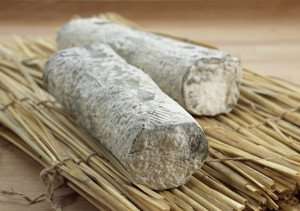Top Food and Drink Trends for Summer
June 14, 2024
There are very few activities we find more exciting or interesting than trying new foods and cooking our favorite innovations at home. Summer is…
Read This PostIf there’s a food that France is known for it just might be cheese. But with so many fabulous cheeses, how is one to choose which to try first? This isn’t so easy to answer, especially when you consider that few of the best French cheeses are imported to the U.S.
 So while you’re in France for a cooking vacation one delicious cheese you must try is chèvre, which translates simply to “goat” as it’s made with goat’s milk. While goat cheese is available in the States, French chèvre is an experience all its own.
So while you’re in France for a cooking vacation one delicious cheese you must try is chèvre, which translates simply to “goat” as it’s made with goat’s milk. While goat cheese is available in the States, French chèvre is an experience all its own.
The history of chèvre dates all the way back to the 8th century and the Moors and Saracens when they settled in the west of France. Today the Loire Valley remains the dominant location for the production of goat cheese as it has the right environment for the goats and cheese production.
 Like many French cheeses, the affinage (or aging process) affects the taste of the cheese. If aged only 10 days or so, it tends to be creamier and milder. If it ages longer, up to one month, it becomes yellow, firm, dry, and much stronger in flavor.
Like many French cheeses, the affinage (or aging process) affects the taste of the cheese. If aged only 10 days or so, it tends to be creamier and milder. If it ages longer, up to one month, it becomes yellow, firm, dry, and much stronger in flavor.
No matter what its age, it goes well with salad, bread, and even fruits, like figs and grapes, and jams. During some of our cooking vacations in France, you may even make a delectable cheese soufflé using St. Maure goat cheese after you visit the goat farm and see the cheese production process first hand.
 In 2011 alone, France produced more than 242 million pounds of goat cheese, making it the number one producer in the entire world.
In 2011 alone, France produced more than 242 million pounds of goat cheese, making it the number one producer in the entire world.
Do you like chèvre? Or what’s your favorite French cheese?
By Liz Hall
Find more photos, videos, food facts, and travel stories from The International Kitchen on Facebook, Instagram, Pinterest, Twitter, and YouTube.
Sign up to receive our newsletter, which includes travel tips, recipes, promotions, and information on our best cooking vacations.
Originally published October 8, 2013.